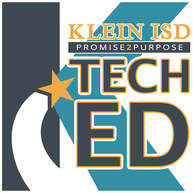AUTODESK - 3DSMAX: CERTIFICATION EXAM REVIEW
NOTE: A 3DS Max student license is available to be downloaded to your personal computer for free here. Also, there is a program called Blender that is available for free and is in many ways similar to 3DS Max; you can download Blender here.
30 QUESTIONS
50 MINUTES
PASS = 700/1000
TOPICS COVERED:
Listed by question:
- Understanding types of lighting, what are they and what do they do (Photometric, Point, Target Direct, Skylight)
- Using Shadow Maps (Bias, Sample Range, Size, Density)
- Using Ray Traced schadows
- Defining NURBS objects (Point and CV Surfaces)
- Using the Bevel tool in the Editable Poly
- Understanding parts of an Editable Mesh
- Using UVW modifier
- Understanding Modifier Stack functions (Reference Separator Bar, Off/On Toggle, Make Unique, Show Result On/Off)
- Using parametrically created Standard Primitives
- Understanding shape sub-objects (Vertex, Spline, Handle, Segment)
- Using material shaders
- Using the Material Editor
- Defining specular highlight
- Understanding Set Key animation
- Understanding file formats; frame rates (PAL, 15fps, Film, NTSC)
- Altering FOV [Field of View]
- Using the Curve Editor menu (Dope Sheet, Out-of-Range Types, Lock Tangents Toggle, Apply Ease Curve)
- Using the Timeline (Menus, Panels, Trays, Buttons, Mouse-click, or Keyboard Shortcuts)
- Creating animation previews
- Understanding rendering engines
- Rendering (Menus, Panels, Trays, Buttons, Mouse-click, or Keyboard Shortcuts)
- Altering Final Gather projection
- Transforming objects
- Understanding display modes
- Defining named selection sets
- Understanding ways of selecting objects
- Resizing objects and groups
- Understanding bone components and tools
- Adjusting FOV [Field of View]
- Keyboard shortcuts
